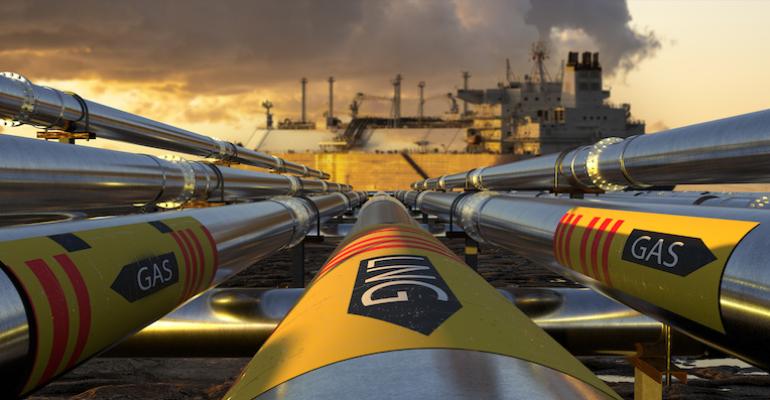Import capacity across the world’s 180 LNG terminals has now reached about one billion tonnes a year but more import facilities will be required to handle transition volumes.
These statistics have been released by Poten, a ‘knowledge partner’ of Hydrogen Asia 2024 to be held in Singapore at the end of July, in a paper that assessed the eventual replacement of carbon-based fuels, including LNG, with low-carbon hydrogen and its derivatives such as ammonia.
Given the number of existing LNG import terminals and new ones that will be required in the years ahead, Poten examined the feasibility of repurposing such terminals for either liquid hydrogen and or liquid ammonia, as a hydrogen derivative.
The firm’s analysts believe that ammonia is a more practical means of transporting hydrogen by sea – it is safer, has a higher heating value per unit of volume, a lower boil-off rate, and lower production and shipping costs. Furthermore, it has been shipped by sea and safely handled at terminals for decades.
The Poten analysis compares the requirements for repurposing existing terminals with building new ones, for ammonia or hydrogen. Existing LNG facilities are not a perfect fit for either, but re-using selected components of LNG terminals could yield potential cost savings of between $100 million in the case of liquid hydrogen and $300-400 million for ammonia.
There are no examples yet of existing LNG import terminals being converted to receive a carbon neutral fuel. However, a number of planned terminals are being designed as ‘hydrogen ready’. Strategies include leaving an LNG terminal largely intact for the import of synthetic or green LNG which can then be cracked to hydrogen at an adjacent site, with carbon dioxide captured for sequestration or re-export.
Alternatively, the jetty and flowlines could be designed for the import of ammonia as a second commodity. Additional space could be assigned for ammonia storage and export, or cracking to hydrogen.
Terminals designs in this way could reduce the cost of the future transition to carbon neutral fuels by enabling the additional infrastructure to be built and expanded over time, Poten said. On top of cost savings, terminal development could be faster with agreement in principle from regulators for the future import of new fuels, such as ammonia, agreed at the outset.
Poten also assessed the possible requirement for shipping capacity. Ammonia is currently transported by sea in ships similar to LPG carriers. But new demand for ammonia shipping capacity would require new ships. Conversion of LPG carriers to ammonia is not technically challenging, but returning a vessel to LPG trading after working in ammonia trades is complicated.
Both products and chemical tankers could be repurposed for the carriage of green ammonia or methanol, the analysts said. However, although technically viable, the number of ships redeployed in this way is likely to be quite small. If either fuel is adopted on a large scale to displace coal or LNG, demand for shipping capacity to service dedicated terminals will climb rapidly. In this instance, a new generation of very large ammonia carriers, for example, will be required.
Copyright © 2024. All rights reserved. Seatrade, a trading name of Informa Markets (UK) Limited.
Add Seatrade Maritime News to your Google News feed.  |

